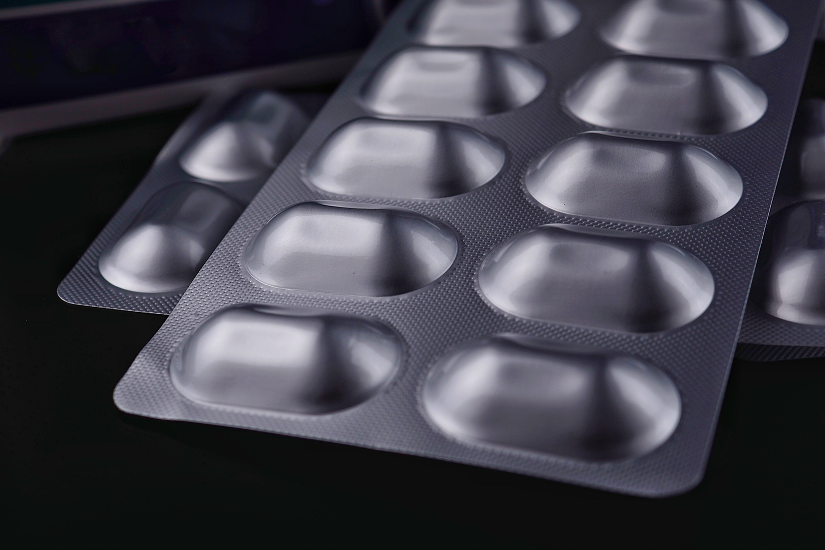by Ravindra Warang
7 minutes
Why Blister Packs Are the Gold Standard for Clinical Trial Packaging
Why blister packaging is becoming the gold standard for dosing accuracy, adherence, and safety in clinical trials.

It was the final week before packaging validation when Dr. Meera Arora, Clinical Supply Head at a global CRO in Bengaluru, received a troubling update from one of their Phase III trial sites. Patients participating in a new antiviral study were skipping or doubling doses — not because of protocol failure, but due to the packaging. The oral investigational drug had been packed in multi-dose bottles, and the lack of clear dose separation was causing confusion among elderly trial participants.
The incident triggered an immediate internal review. Within days, Meera’s team decided to transition all upcoming studies to blister packaging.
That decision, though corrective at first, aligned with a larger industry trend: across global clinical trials, blister packs are now recognized as the gold standard in packaging investigational medicinal products (IMPs). Here’s why.
Ensuring Dosing Accuracy at the Unit Level
Blister packaging offers clear physical separation between each dose, ensuring that the correct amount of medication is taken at the right time. Unlike bottles where patients must remember the count or use external tools (like pill boxes or leaflets), blister packs visually guide participants.
This is particularly important in multi-arm or dose-escalation trials, where precision and adherence can directly influence the validity of efficacy data. Blister formats allow investigators to configure drug regimens in a calendar-based sequence (e.g., Day 1 to Day 28), reducing the risk of incorrect dosing or skipped intervals.
Supporting Patient Adherence Across Diverse Populations
Adherence is a critical variable in clinical trials — poor adherence can distort results and inflate dropout rates. Blister packaging supports compliance in multiple ways.
For older adults or pediatric patients, each cavity serves as a visual reminder and a tactile reinforcement. Calendar-labeled cards help participants track usage over time. In multilingual or low-literacy contexts, color-coding and symbology can be applied to minimize instruction complexity.
Studies have consistently shown that unit-dose blister packs improve adherence rates by 20–40% compared to bottle formats, particularly in long-duration or home-managed trials.
Enhancing Safety and Reducing Medication Errors
In clinical trials, especially blinded or placebo-controlled designs, packaging must minimize risk of confusion, tampering, or overdose. Blister packs offer tamper-evident features by design: each dose is individually sealed, making it clear if a cavity has been breached.
Moreover, blisters can be labeled with batch numbers, expiry dates, and drug identifiers directly on the foil or lidding. In cases of emergency unblinding or reconciliation, this traceability is invaluable.
Additionally, blister packs can prevent patients from accidentally ingesting the wrong dose — a risk in bottle packs where tablets or capsules may be visually indistinguishable or mistakenly consumed in multiples.
Improving Logistics, Storage, and Stability
From a supply chain perspective, blister packaging provides significant advantages. They are generally more compact, stackable, and weigh less than bottle-based kits. This reduces storage costs and shipping volume — crucial in large, multi-center trials.
Blisters also offer superior protection from environmental stressors. In high-humidity zones (such as India’s ICH Zone IVb), cold-form Alu-Alu blisters maintain drug stability better than HDPE bottles once opened. Each cavity protects the dose independently, reducing the risk of cumulative exposure to oxygen or moisture.
For temperature-sensitive compounds, customized blister cards with secondary insulation or NFC-based temperature indicators are becoming increasingly popular.
Seamless Integration with Randomization and Traceability Systems
Modern trials demand granular data — not just on outcomes, but on patient behavior, medication accountability, and inventory tracking. Blister packs are compatible with randomization software (IVRS/IWRS) and serialization systems.
Each blister card or kit can be printed with 2D data matrix codes, unique subject IDs, and QR/NFC tags for traceability. This supports tamper-proof allocation of treatment arms and enables real-time audit trails for clinical monitors.
Unlike bottle-based kits, which require additional documentation and bagging, blister formats can be serialized down to the cavity level, especially when used with smart blistering machinery.
Aligning with Global Regulatory Expectations
While regulatory authorities such as the FDA, EMA, and CDSCO do not mandate blister packs, they increasingly support formats that promote safety, traceability, and dose accountability. This includes:
- Better reconciliation at study close-out
- Reduced risk of dosing deviations
- Enhanced compliance with investigational labeling standards
Sponsors using blister packaging typically experience fewer deviations in CRA audits and smoother DSUR (Development Safety Update Report) compilation.
Regulators also prefer formats that simplify temperature excursion reporting, which blisters enable through stability per cavity.
Comparison: Blister vs. Bottle in Clinical Trial Settings

Clinical Success Story: Oncology Trial with Calendar Blisters
In one global Phase III oncology study involving over 1,200 subjects, a CRO implemented calendar-labeled blister packs to dispense a cytotoxic agent over a 21-day cycle.
The results were measurable:
- 97.8% of patients followed the correct regimen without deviation
- Protocol violations related to dosing dropped by 32% compared to the previous bottle-based trial
- Trial reconciliation was completed 40% faster, saving time and cost in study close-out
Patients also reported higher satisfaction due to simplicity in use — a win-win for both operational efficiency and patient experience.
Key Considerations When Choosing Blister for Trials
While blister packs offer compelling advantages, sponsors must still consider:
- Barrier requirements: Use high-barrier (PVDC or Alu-Alu) for moisture-sensitive APIs
- Storage volume: Multi-card kits may be needed for long-term studies
- Regulatory compliance: Adhere to labeling and stability guidelines for investigational packaging
- Site capabilities: Ensure investigators are trained to handle, document, and store blisters properly
Packaging vendors can now offer hybrid solutions—combining blisters, prefilled devices, and patient diaries in one kit—further simplifying trial management.
Final Thoughts: Packaging as a Strategic Decision
In modern clinical research, packaging is not a back-office function—it’s a frontline contributor to trial success. A well-designed blister pack protects the molecule, empowers the patient, satisfies the regulator, and supports the sponsor’s goals for data integrity and operational efficiency.
As clinical trials grow more complex and decentralized, the demand for intuitive, traceable, and compliant packaging will only increase. And in that future, blister packs are not just a practical solution—they’re a strategic advantage.
FAQs
1. Why are blister packs preferred in clinical trials?
Because they ensure dose-level visibility, promote patient adherence, and support regulatory traceability—blister packs reduce errors and simplify reconciliation.
2. Are bottle packs still acceptable for clinical trials?
Yes, but they offer less control. Bottles are typically used in early phase or hospital-based studies, while blisters are favored for multi-site or blinded studies.
3. What kind of blister materials are used in clinical research?
Most trials use thermoformed PVC/PVDC or cold-formed Alu-Alu depending on the drug’s stability needs.




